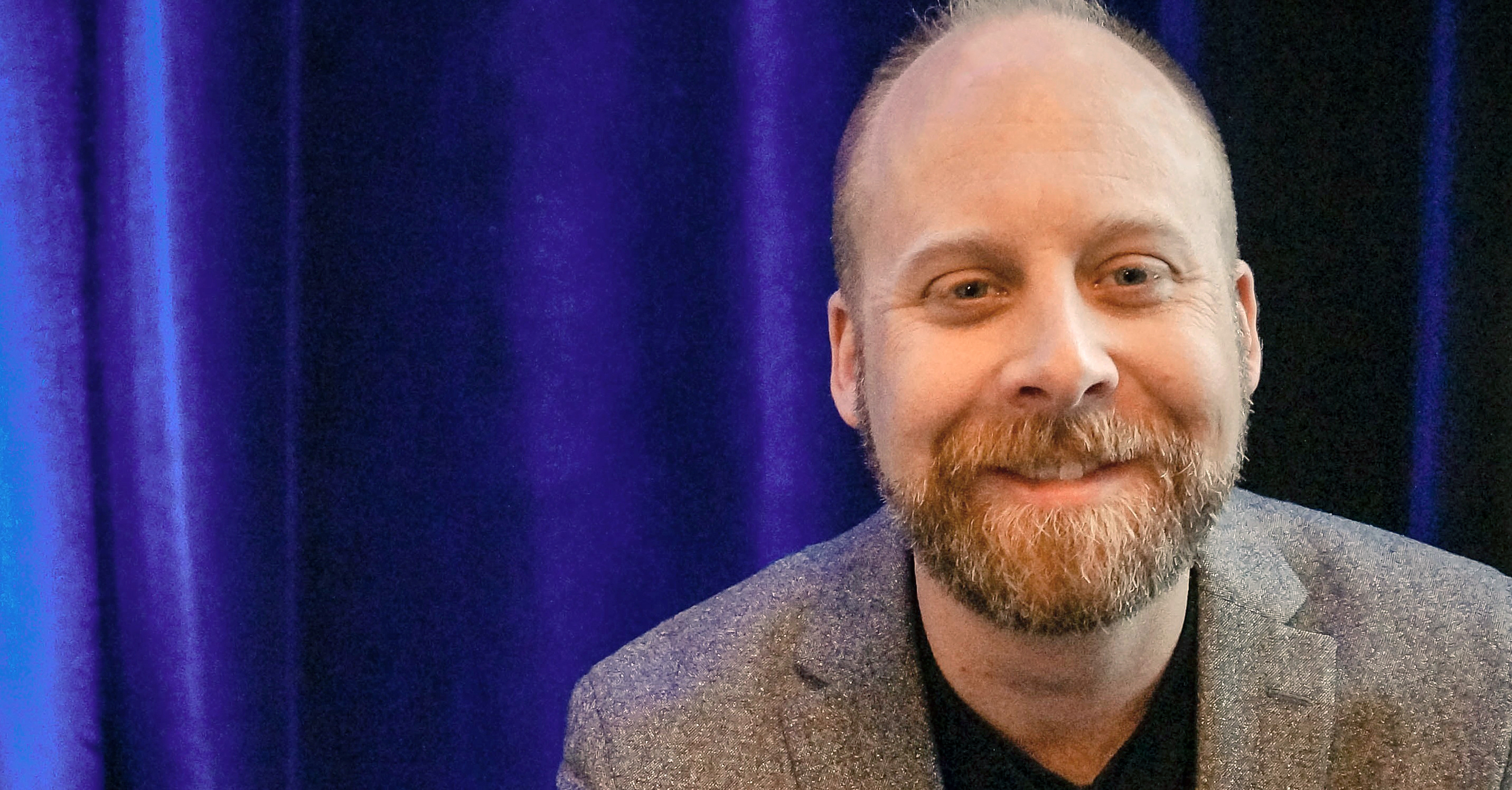Meeting Expectations: An Interview With Kevin M. Hoffman
Kevin M. Hoffman has been a designer for more than 15 years now, and in that time worked on small libraries, the University of Baltimore, Nintendo, MTV, and the United States Holocaust Memorial Museum. We caught him between meetings to share a few thoughts about his favorite tool, conversational interfaces, and meeting design.

How'd you get your start in design, and on the web, if the two are different?
My first taste of both web and design work was in graduate school during the mid-1990s. I helped build a tool that allowed community organizations to perform property database searches. It helped them identify delinquent property owners in economically challenged areas. It was a trial by fire, as it was for most people building websites in those days. You just designed and built the thing! And then checked that thing in Mosaic and Netscape 2.
Processes for working together have become a lot more formalized since then, and mostly for the better. However, I do believe that a little bit of that “wild west attitude” has a place in our work.
You design meetings. Meetings are a thing you can design? How so?
You can definitely design meetings, and just about anything else. To design a thing means two checkboxes are checked: you've determined a desired outcome, and there is consideration for how people actually use or experience the thing. Painful meetings often fail on one of those two fronts.
Meetings often happen out of habit rather than intention, which fails the first checkbox. Typically, there's not a clear, shared understanding of a specific outcome for each meeting, other than “be more further along than where we were when we started.” How do you measure that? How do you prove it? You can't do either, really.
In terms of consideration of users, meetings can treat “meeting users,” or attendees, horribly. We don't fully engage the brain, and fall back on listening as a primary method of accomplishing a goal. It's as if a website only expected you to read body copy, with no thought to headings or visual ways of communicating ideas. The user experience of reading lines and lines of copy is mentally exhausting. The user experience of sitting in conversational meetings can be exhausting for the same reason.
You're giving a talk called “The Five Meetings” this year at AEA. It's clearly about meetings, but what will people take away from it?
Two things. First of all, I hope people come away with the belief no one is powerless to change the kinds of meetings they have in their organization. Not everyone is in a position where they can call, or even lead, a meeting, but everyone has a shared responsibility for the quality of that time together. There are simple things you can do—structures to fall back on, conversational hacks, and ways of changing the lens on a topic—to improve them.
Second, that even though some of us follow a prescribed set of meetings, either by process—agile, waterfall, or making it up—or by culture—conservative large company, startup, or one-person shop—we all share a lot more struggles, project to project, than we realize. I'm looking forward to hearing everyone talk to each other about all the meetings and meeting challenges they have in common, and being a part of that conversation. That's where the best insights happen: the conversations after a talk!
What are some tools, tricks, and/or techniques you can't work without?
Any tool that is designed for groups to use together, rather than individuals to use alone. Current examples include Google Docs, Slack, Dropbox, Github, and a tool I'm working on with some really smart friends called Boardthing. I absolutely cannot work without a place to draw what I'm thinking. I also can't work without breaks, and lots of them!
What has you most excited these days?
I'm super excited about conversational interface systems. In the technology space, I really think Apple has its work cut out for it when you look at Siri's performance compared to Google Now or Amazon Echo, in terms of making people's lives easier. I do think Siri does well in specific situations, such as Homekit or the Apple TV, but general-purpose use isn't quite as smooth as Android, in my experience. Conversational interfaces can certainly be awkward at first, and honestly feel a little like science fiction to an organization that isn't designing for them yet. But using tools like IBM's Watson API, it's not really that hard for anyone to build that kind of logic into websites and applications.
Kevin will present “The Five Meetings” at An Event Apart Washington DC, July 25-27, 2016 . Don't miss out on this essential information—plus eleven other great presentations for people who create digital experiences.